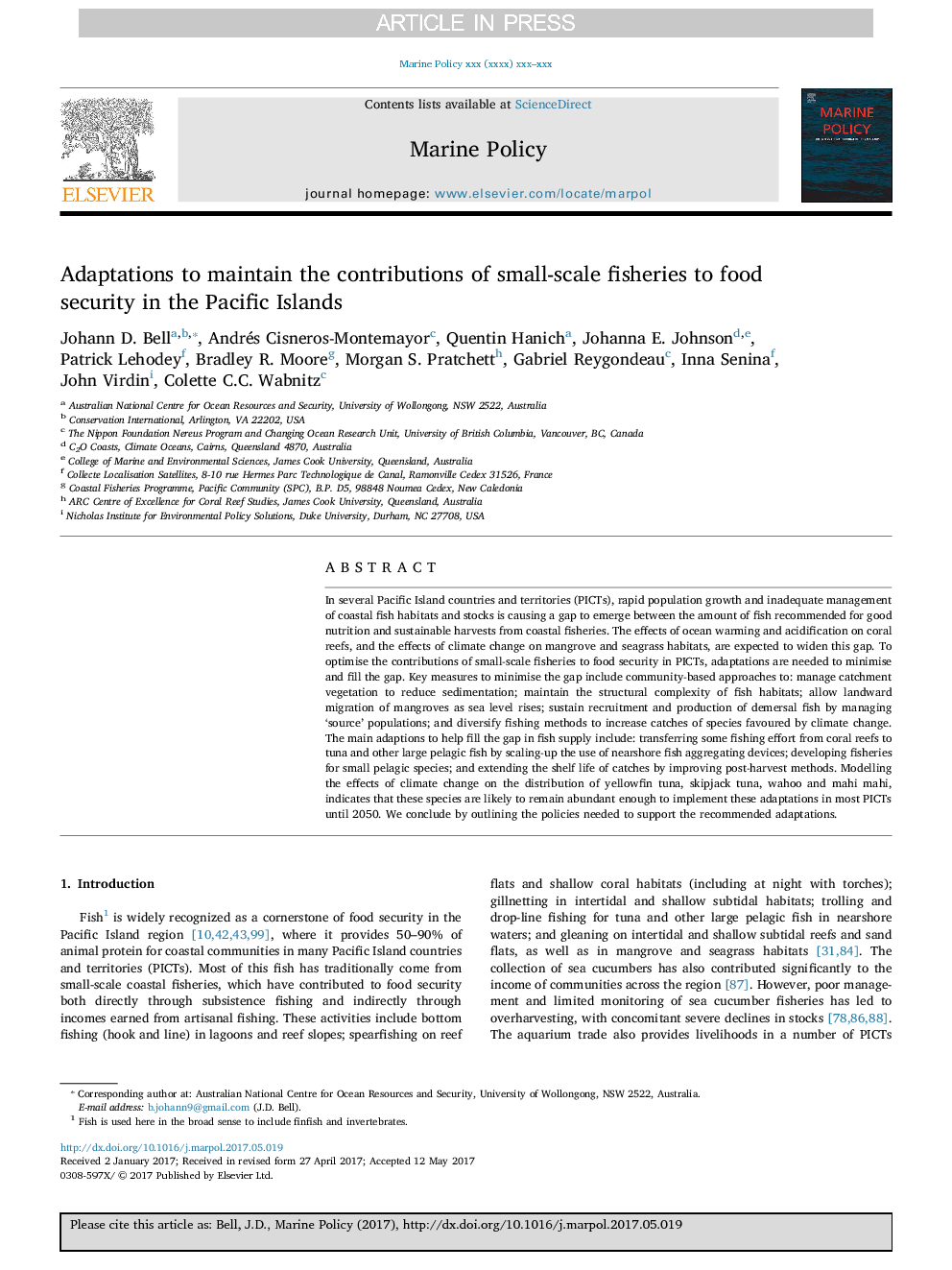ترجمه فارسی عنوان مقاله
سازگاری برای حفظ مشارکت ماهیگیری کوچک در راستای تامین امنیت غذایی در جزایر اقیانوس آرام
عنوان انگلیسی
Adaptations to maintain the contributions of small-scale fisheries to food security in the Pacific Islands
| کد مقاله | سال انتشار | تعداد صفحات مقاله انگلیسی |
|---|---|---|
| 160086 | 2018 | 12 صفحه PDF |
منبع

Publisher : Elsevier - Science Direct (الزویر - ساینس دایرکت)
Journal : Marine Policy, Volume 88, February 2018, Pages 303-314

